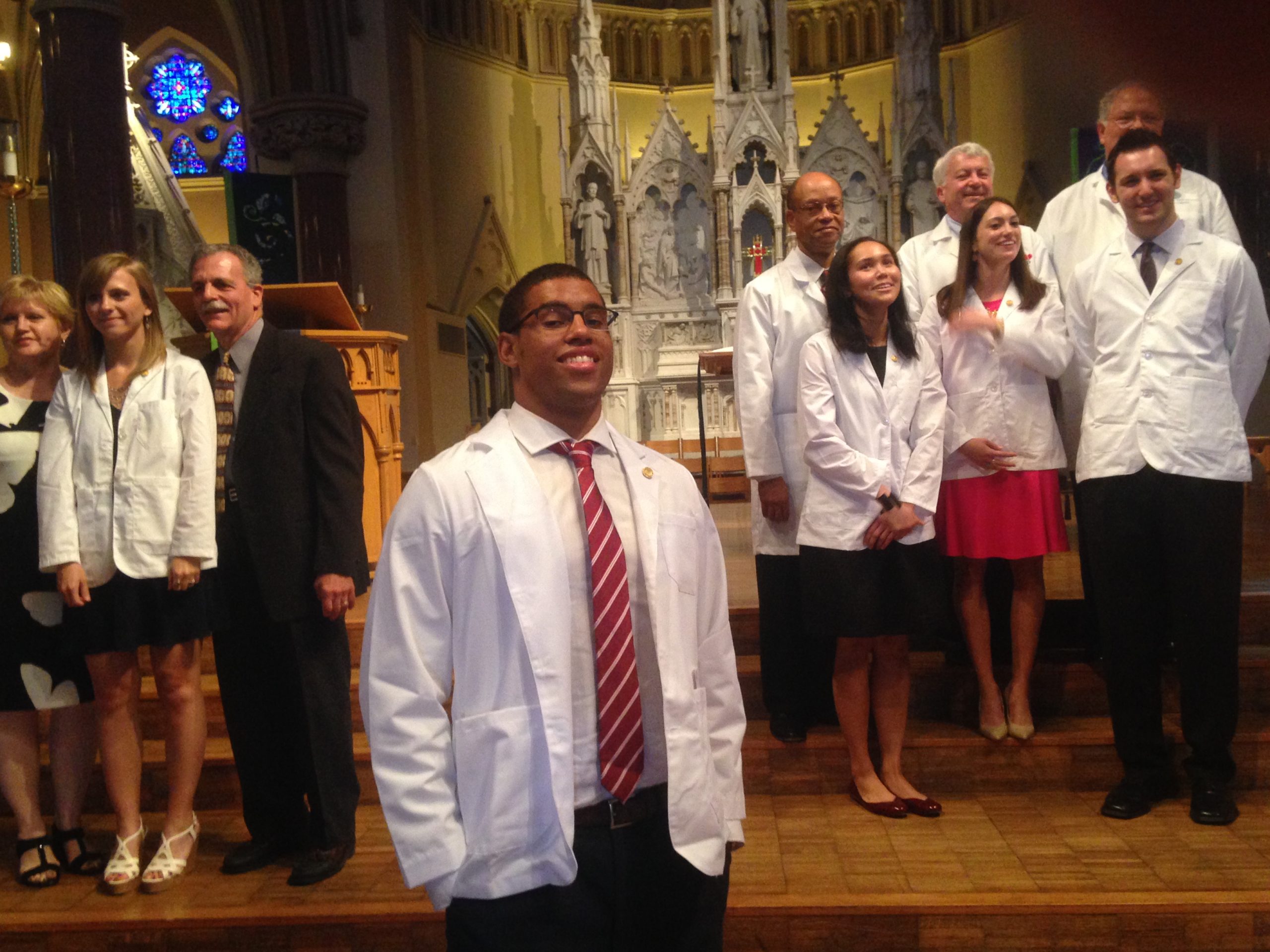Treating Patients for the First Time

Like most diabetics, I’ve spent my fair share of time in the doctor’s office. Sitting up in the patient’s chair, talking about my most recent A1c and blood glucose trends, my experiences thus far have all been on the receiving end. Well, for the first time, I recently flipped the switch on what’s been a routine in my life, and became the provider in charge of my own diabetic patients.
As a first-year medical student, I have the opportunity to volunteer my time on the weekends to a free, student-run clinic that hosts different specialties including: regular adult care, pediatrics, and diabetes. We see patients and more or less take the place of a primary care physician for routine health matters. A number of medical students, pharmacy students, nutritionists, and at least one licensed attending physician collaborate to provide care and set health plans for these patients who may otherwise never be seen by doctors.
The free clinic is named the Health Resource Center (HRC), and is strategically located in the 63113 area code, a low-income area in the northern region of the city with some of the highest problematic health disparities in St. Louis. This small strip of the city has one of the smallest general populations, but is among the highest in death rates, dropout rates, and diabetes[i]. While such an area requires a multifaceted, interdisciplinary plan of attack in order to truly solve these disparities, as future healthcare providers, we believe increasing care and education through a free clinic is a step towards the right direction. So when I first learned of the diabetes-specific clinic day, I jumped at the opportunity and signed up immediately. What better way to gain my first, real clinical experience with a degree of responsibility than to treat patients with the disease I’ve essentially grown up and evolved with over the last eleven years? I was excited for the first chance to showcase my abilities as a not just a future physician, but also as a health coach and instructor.
I saw two patients that day in the clinic. Each was significantly older than I am. This will likely mostly be the case, at least for the start of my career, but the fact that I am brand new to this role is why seniority plays a part in my apprehension. Although I will become, and am already well on my way to being qualified, I still marvel at the way that my current status gives me to the right to instruct grown adults on the way to live their lives.
My first patient had just recently been diagnosed with diabetes. My job (thankfully) was not to break the news of his diagnosis, but to now educate him on everything that comes next. I had to dissolve my intellectual bias and teach this patient concepts that have been engrained into my consciousness such as: testing blood sugar several times throughout the day, what a hemoglobin A1c was and how to lower it, and signs and symptoms of high and low blood sugars. The man was elderly, but in great physical condition. The attending physician and I decided he could likely greatly reduce his symptoms and even possibly reverse his diabetes just by making some significant changes to his diet.
My second patient was actually diagnosed with diabetes in the early 2000s and therefore has actually been managing his condition longer than I have. In contrast to my first patient, he already knew much of the key points in controlling diabetes, this trip to the clinic was more about fine-tuning his techniques on a path to reclaiming his life in the form of healthier habits. Having already completed the visit with my first patient, I was much more calm and less anxious about my role delivering sound advice and helping this next patient achieve his health goals. Years of researching and experimenting ways to manage my own diabetes finally came to form. I was able to package information from the American Diabetes Association, the advice of the attending physician, and my own personal knowledge and experience in a structured nutrition and exercise plan for this patient to take home and implement in his everyday routine.
Treating just two patients in a day is the equivalent of chipping away at a wall with a teaspoon. While I was able to successfully aid in not only treating patients, but helping further their education, there is still much work to be done in achieving health outcome equality. The continuing work of the HRC will have to be supplemented with nutritional, pharmaceutical, and exercise programs outside of the clinic. I hope to drive forth these causes as I move along the road to becoming a physician. That day was the first of many where I will be depended on for care and instruction. As these experiences come, my confidence in my ability grows as I fulfill my calling.
If you are located in the St. Louis area and would like to find out more information about the Health Resource Center in, please email us at hrc@slu.edu, below is the address to the clinic:
Health Resource Center- Saint Louis University School of Medicine
1408 N Kingshighway Blvd, Suite 213
Saint Louis, MO 63113
Phone: (314) 389-0008/ Fax: (314) 696-2671
Website: https://sites.google.com/a/slu.edu/health-resources-center-saint-louis-university-school-of-medicine/
Regular Clinic Hours are held every Saturday from 9:00 am- 12:00 pm, with signups starting at 8:30 am. Patients are served in order of arrival.
For more stories and health tips, follow me along my journey through medicine. @roychealth
[i] City of St. Louis Department of Health, 2012
